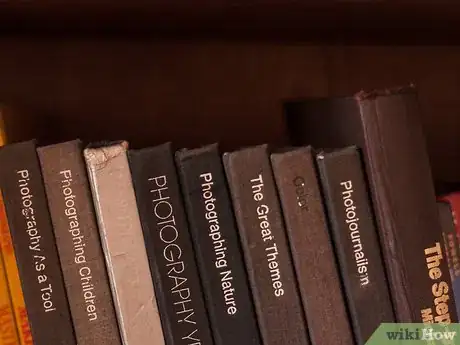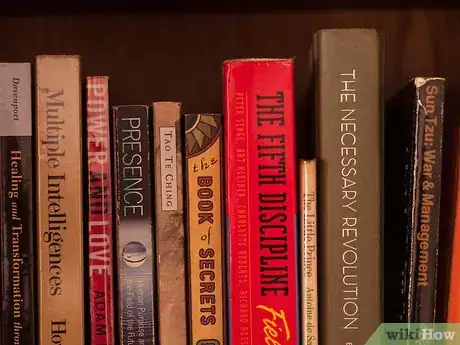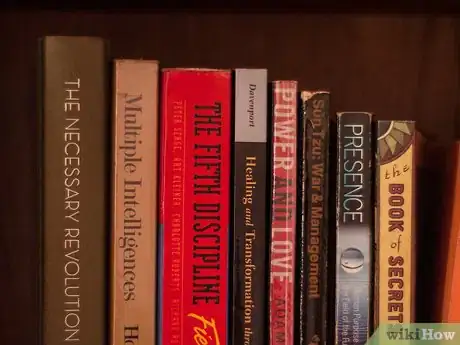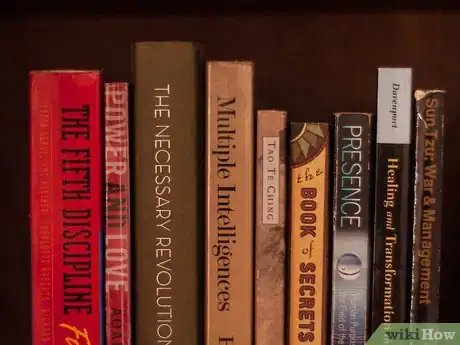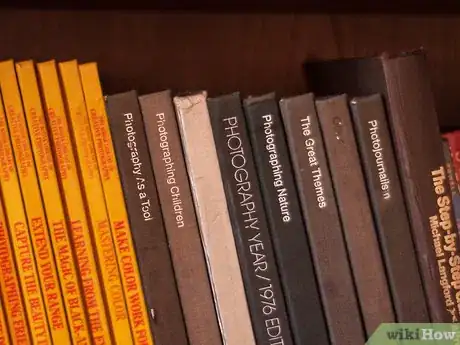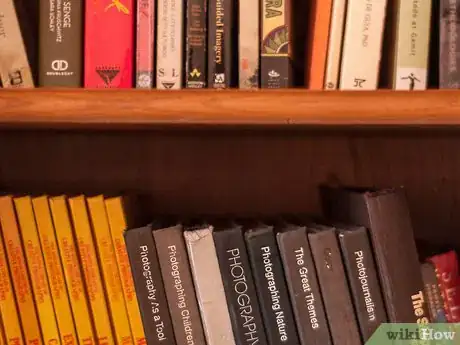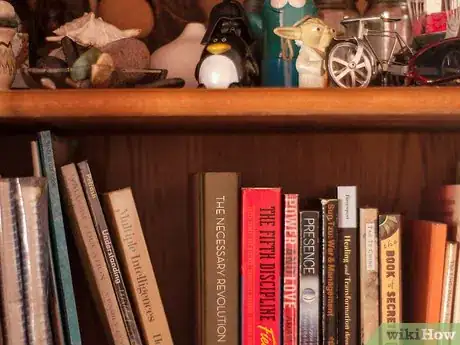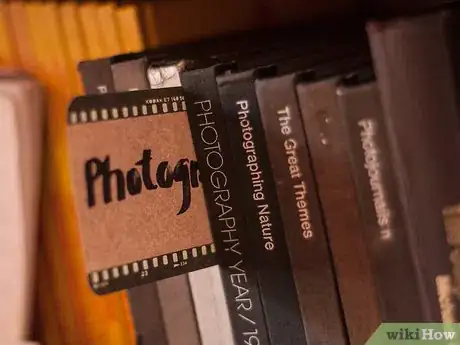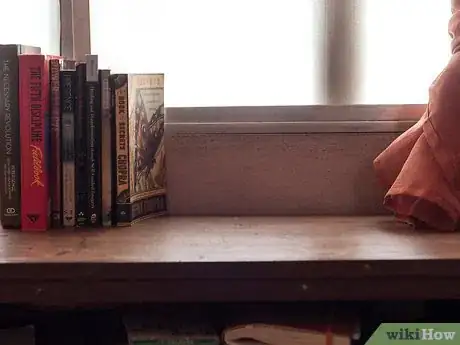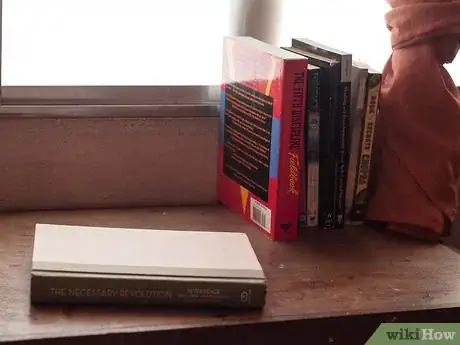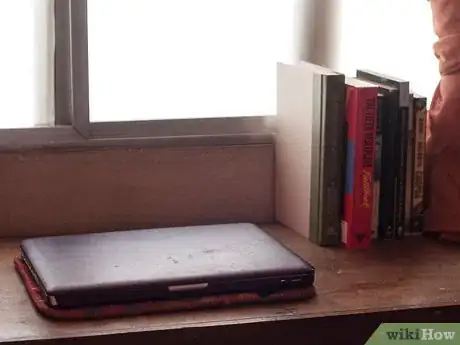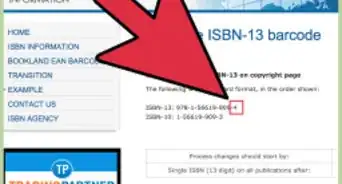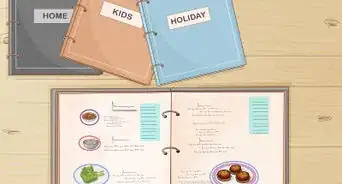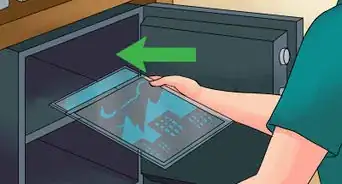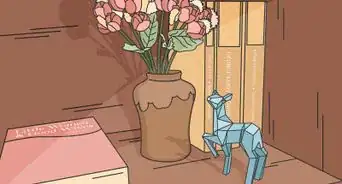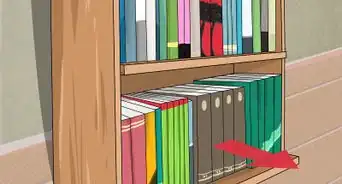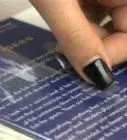This article was co-authored by Lois Wade, a trusted member of wikiHow's volunteer community. Lois Wade was a high school librarian for four years. She is experienced in repairing books, resewing bindings, and protecting books, along with general book care and organization.
This article has been viewed 106,417 times.
Learn more...
Are you a book lover? Do you have more books than available bookcases? Do friends jokingly call you "Bookworm" or "Bibliophile"? It's great to have lots of books but it's not so much fun tripping over them or never being able to find exactly the one you want. To ensure that your books are kept in fabulous order and can always be found when you want them, here are some simple but effective ways to organize your book collection.
Size or Color Organization
-
1Place the books on the shelf according to size. It is best to put larger, heavier books on lower shelves and smaller, lighter books on higher shelves; this is a basic principle to ensure that you stabilize the bookcase. This method is visually appealing and appears neat, as there is a size order. If you remember books by their size or shape, this method might be just right for you.
-
2Sort books by color. For some people, the book's color or colorful style/depictions on the book's cover is highly memorable and instantly draws you back to each and every book read. And if you love arranging things by color in your home, this could be a great décor statement as well as an easy to way to retrieve your books.
Subject Method
-
1Sort your books by topic. This means dividing the books into what you see as distinct topics, such as placing all the romance books in one pile, all the science books in another, philosophy, biographies, how-to manuals, etc. into another pile.[1]
- Consider dividing fiction and non-fiction. You might like to make a distinction between fiction and non-fiction books––this method tends to encourage this division naturally. Such a division can be done on the same bookshelf, for example by placing all fiction novels on the top shelf and all woodworking manuals on the bottom shelf. Or it can be done by using different bookshelves across the house, for example, keeping cookbooks in the kitchen and romance novels in the bedroom.
-
2Determine the shelf space required for each topic. It's always wise to assume you need more space rather than less, since it's likely you'll add to your collection over time and somehow, stray books will always turn up in need of shelving!
-
3Place the books by topic selection on the shelves, together with others of their genre. In some cases, as shown in this image, you might like to add some relevant items to the shelf as well, such as figurines, photos or collectibles.[2]
-
4Choose an identifying mark for each subject or genre. This method is optional if it's already easy for you to remember where you've placed the books by topic. But if you need to further clarify the topics, some easy methods to adopt include:
- Colored Stickers: Choose stickers with permanent adhesive from a library supply company, or be prepared to cover the sticker in permanent tape. Avoid packing tape and scotch tape as they yellow, crack and peel, while duct tape becomes gooey over time.
- Colored Cloth Tape: Permanently adhesive colored tapes work very well for this task.
- Written symbols: Use a permanent marker to write a letter(s) or identifying mark for each subject or genre. For example: "R" for Romance, "M" for Mystery, "R" for Religion, "B" for Biographies, etc. Unfortunately, not all books are the same color, so what shows up well on one cover may not show up at all on a different color; as an exception for books that use the same color as your label, consider opting for a white label and use marker in the chosen color.
- These are great to use if you move frequently and need your book collection to stay relatively intact when packed.
Desktop Organization
-
1If you keep a book collection on your desk, organizing it can help make your work or study more effective. Take a look at what books are currently sitting on your desk.
- What sorts of books do you consider necessary for a desk book collection? Usually it will be books you need to reach for almost every time you're at your desk, such as dictionaries, reference manuals, computer troubleshooting manuals, guides for writing, editing or calculating, books that are currently important for an essay/report/book you're preparing, etc. Books that are not likely to be as necessary could include manuals you'd check no more than once every few months, novels you're meaning to get around to reading and books that are more interesting than what you're supposed to be getting on with! Remove anything that isn't in frequent use or is serving as a distraction.
-
2Use a very small part of your desk for your book collection. The basic rule of books on a desk is to keep them to a minimum. The desk is an area for papers, the computer and spreading out open books that are in use. Anything else is extraneous and risks getting in the way, especially with a small desk.
- Ideas for shelves on or near desks include: a small portable shelf that can be picked up by hand with the books still on it; books held upright between portable bookends; shelving hanging above the desk on the wall; or simply leaning books up against the wall if the desk sits against a wall.
-
3Arrange the books according to frequency of use. Put the most used as near to your reach as possible, and the lesser used but still useful ones can be placed further away from where you're seated. Keep it simple.
- Get into the habit of always returning books to their proper shelves after using. Books piling up on a desk can demotivate you from getting back to study or work and isn't very organized.
Expert Q&A
-
QuestionHow do I display lots of books?
 Karen ParzialeKaren Parziale is a Home Stager, Home Organizer, and the Founder of The Real Estate Staging Studio based in Hoboken, New Jersey. Karen has over 15 years of home staging and decorating experience and has staged over 5,000 homes. She specializes in project management, space planning, material selections, and builder, architect, and client relationships.
Karen ParzialeKaren Parziale is a Home Stager, Home Organizer, and the Founder of The Real Estate Staging Studio based in Hoboken, New Jersey. Karen has over 15 years of home staging and decorating experience and has staged over 5,000 homes. She specializes in project management, space planning, material selections, and builder, architect, and client relationships.
Home Stager & Interior Designer Try displaying your books by height vertically, going from tallest to shortest. To add some extra interest, stack some of your books horizontally, too.
Try displaying your books by height vertically, going from tallest to shortest. To add some extra interest, stack some of your books horizontally, too. -
QuestionHow do you store too many books?
 Karen ParzialeKaren Parziale is a Home Stager, Home Organizer, and the Founder of The Real Estate Staging Studio based in Hoboken, New Jersey. Karen has over 15 years of home staging and decorating experience and has staged over 5,000 homes. She specializes in project management, space planning, material selections, and builder, architect, and client relationships.
Karen ParzialeKaren Parziale is a Home Stager, Home Organizer, and the Founder of The Real Estate Staging Studio based in Hoboken, New Jersey. Karen has over 15 years of home staging and decorating experience and has staged over 5,000 homes. She specializes in project management, space planning, material selections, and builder, architect, and client relationships.
Home Stager & Interior Designer Stash your books an underbed storage container. Some brands make really large containers that can hold up to 66 quarts (62.4 L). They're typically see-through and have rollers on the bottom, which is really nice.
Stash your books an underbed storage container. Some brands make really large containers that can hold up to 66 quarts (62.4 L). They're typically see-through and have rollers on the bottom, which is really nice. -
QuestionHow do you decorate with a lot of books?
 Karen ParzialeKaren Parziale is a Home Stager, Home Organizer, and the Founder of The Real Estate Staging Studio based in Hoboken, New Jersey. Karen has over 15 years of home staging and decorating experience and has staged over 5,000 homes. She specializes in project management, space planning, material selections, and builder, architect, and client relationships.
Karen ParzialeKaren Parziale is a Home Stager, Home Organizer, and the Founder of The Real Estate Staging Studio based in Hoboken, New Jersey. Karen has over 15 years of home staging and decorating experience and has staged over 5,000 homes. She specializes in project management, space planning, material selections, and builder, architect, and client relationships.
Home Stager & Interior Designer Use books as décor or props in your home! For instance, if your living room has a lot of yellows and whites, you might place a book with yellow cover on your coffee table.
Use books as décor or props in your home! For instance, if your living room has a lot of yellows and whites, you might place a book with yellow cover on your coffee table.
Warnings
- Use only library quality repair supplies if you want your books to last. Using scotch, packing, or duct tape on a book will ruin the book for long term use.⧼thumbs_response⧽
Things You'll Need
- A book collection
